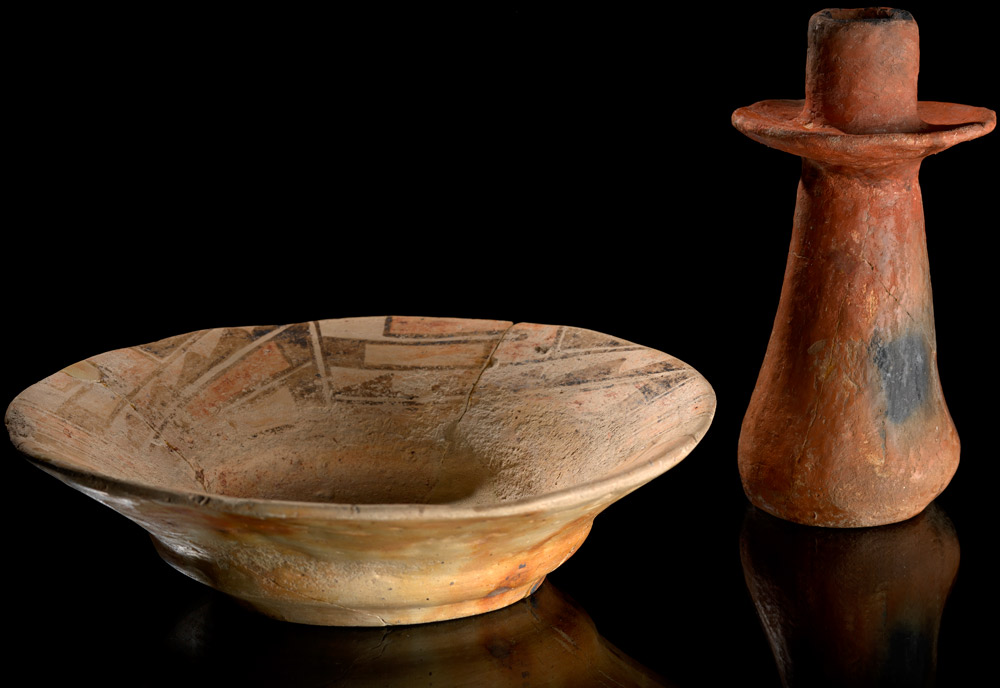
Hawikku plate and candlestick
ca. 1629–1680
Cibola County, New Mexico
Clay
6 x 20.5 cm; 16 x 7 cm
Hendricks–Hodge Expedition
8/6825, 9/6974
for similar objects.
Hawikku, one of several ancestral villages of the A:shiwi (Zuni), served as a regional crossroad for trade and knowledge. Hawikku is also popularly known as the site of the first documented contact between nonindigenous and indigenous peoples in the Southwest and has had its share of conjecture and debate. At Hawikku, the story goes, in 1539 a Moorish slave named Estevan, scouting ahead of a Spanish group, met A:shiwi. Interestingly, it seems this first nonindigenous contact was made by an African. It wasn’t until a year later that Coronado finally led his expedition to Hawikku.
During the Spanish occupancy, which lasted roughly 140 years, many new things were introduced to our people, including ceramic styles that met the cultural and religious needs of the missionaries. This candleholder and plate obviously do not follow the traditions of A:shiwi ceramic-making before the Spaniards’ arrival or after their departure. That said, the plate in particular is revealing because the painted designs represent a definite continuity of A:shiwi artistic and cultural sensibilities even through the disruption of the Spanish period.
Our people resisted attempts at cultural and political domination. The brutality of the missionaries resulted in the Pueblo Revolt of 1680 and the killing of Catholic priests and burning of mission churches. Hawikku, today a rocky and nondescript hill overlooking cornfields, reminds us that, like our hand-made creations, our culture may sometimes adapt to external influences, but it will always remain deeply A:shiwi.
—Jim Enote (A:shiwi)
Director, A:shiwi A:wan Museum and Heritage Center, Zuni, New Museum

